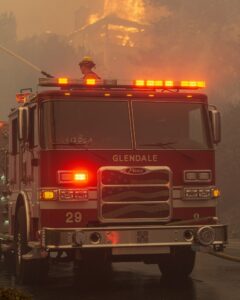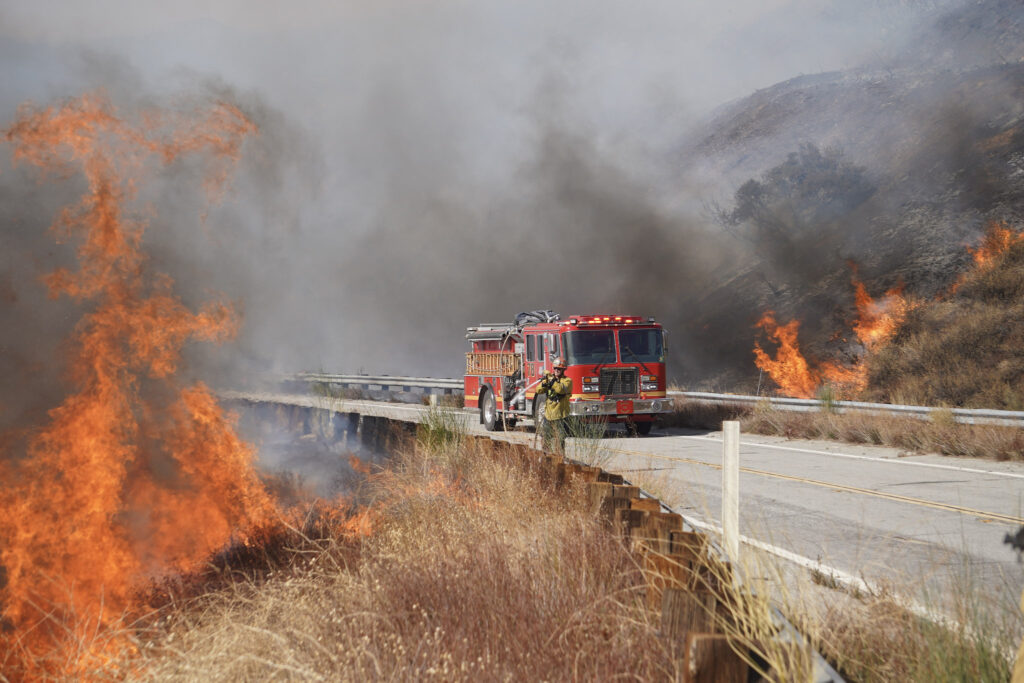Numbers may not lie, but they can certainly be misrepresented. I wanted to take a moment to look at some of the facts and figures about the recent Southern California fires and the lessons we can and should take away from them.
The wildfires that struck Pacific Palisades and Altadena in January 2025 will certainly go down in fire history books. These massive blazes reminded us all that even with the best planning, nature doesn’t always play by the rules. It’s important all of us in public safety understand there are times when things happen that are completely out of our control.
“The number you have reached is not in service.”
This phrase is a startling reminder of the impact of these devastating fires. During this fire event, communication was strained, resources were overwhelmed and systems that usually perform well under pressure were pushed beyond their limits. Even if we could’ve sent 100 additional engines into these fires, I believe the outcome would not have changed significantly.
If we had 41,300 engines on scene, each one with the standard staffing of three to four personnel, we would have needed over 150,000 personnel on scene — about 20 times the number that actually responded.
Responses with Apparatus
Consider this: During the Pacific Palisades Fire, 5,300 structures were lost. The Altadena fire destroyed 8,600 structures. Between the two, 13,900 total structures were decimated.
Most fire department policies require at least three engines, one truck, one paramedic unit and one battalion chief to respond and effectively extinguish a typical residential structure fire. Policies requiring fire responses for commercial structures may require a minimum of four engines, two trucks, a paramedic unit and a battalion chief. Often, when the first-arriving unit gets on scene and begins working a fire, additional resources are requested.
Now, let’s do the math. During the Palisades and Eaton fires, if each structure had been treated as a typical single-family residential response, the full event would have required at least 41,300 engines. And that doesn’t factor in resources such as air support, hand crews, dozers, water tenders or additional incident management personnel needed to fight wildfires fanned by 50- to 100-mph winds.
Approximately 7,500 firefighting and emergency personnel were deployed to fight these two fires. They worked around the clock under difficult conditions, many putting themselves directly in harm’s way. Hypothetically, if we had 41,300 engines on scene, each one with the standard staffing of three to four personnel, we would have needed over 150,000 personnel on scene — about 20 times the number that actually responded. This number illustrates the sobering truth that even the best-staffed departments are vulnerable during large-scale wildfires.
Non-Wildfire Related Calls
While the fires raged, agencies throughout the Southland also responded to thousands of additional wind-related calls: structure fires, downed power lines, fallen trees and medical emergencies. Calls surged significantly during this period. In addition to the major fires, there were dozens of smaller brush fires scattered throughout Southern California that also required attention.
Simply put, departments were stretched to the brink. The triple-whammy of winds and drought and fuel created an unwinnable situation. Our people were simply outgunned by the force of Mother Nature and overwhelmed by the sheer volume of incidents.
The Policy Factor
Does this require a change in policy, a shift in the way we operate? Without a doubt, all after-action reports will make us re-evaluate and adjust policies based on the lessons learned. As Gordon Graham would say, this is a low-frequency, high-impact event. But these events are becoming less rare. Wildfires — once considered seasonal — are now year-round threats in California and beyond.
The political fallout has already begun. In the wake of public scrutiny, some members of the Los Angeles Fire Department’s top brass have resigned. I won’t weigh in on whether that was necessary or justified, but I will say leadership should always be evaluated on preparation, communication and response, and not on their ability (or inability) to control the uncontrollable.
Staying Fit for Duty
Firefighters can’t help but feel a loss when we don’t make a save. These incidents take a toll on us, both mentally and physically. Many crews worked for days without proper rest or debriefing. That kind of sustained trauma can lead to burnout and PTSD.
As first responders, we train often and are able to handle most incidents we encounter. We are quick to take control of incidents, something we can justifiably be proud of. It gives us a sense of internal security. But events like January’s fires remind us that sometimes, our best just isn’t enough to stop destruction on a massive scale. We need to learn to be OK with that.
These fires demonstrated how easily incidents can overwhelm us. They were out of control. Sure, we can continue planning and training extensively, but during times like these, things often don’t turn out the way we anticipate. As much as we’d like to be able to, we can’t predict how the storms will go. We need to shift our mindset from reaction to resilience. Prepare for what you can, but invest in recovery, too — physical, mental and organizational.
Make sure your agency has the right training, mutual aid agreements, equipment, policies and peer support programs in place. Support your people. Conduct realistic drills. Ensure your crews know that it’s OK to ask for help.
Info Sheet: Fire & Rescue Policy Management Solution DOWNLOAD NOW
Lessons Learned
Finally, accept that you will feel pain and discomfort but know that you can handle it with the right resources. Be proud of yourselves! You all did the best you could with what you were given. Stand tall — not just for the fires you put out, but also for the strength you showed in the face of devastation.
These fires are on the rise and not going away — in fact, they seem to be increasing in both size and intensity. Is your agency prepared?
Let these numbers create improvement, not shame. Let these lessons prompt better policies, not blame. And most importantly, let this be a moment where we double down on supporting the people who protect us.





